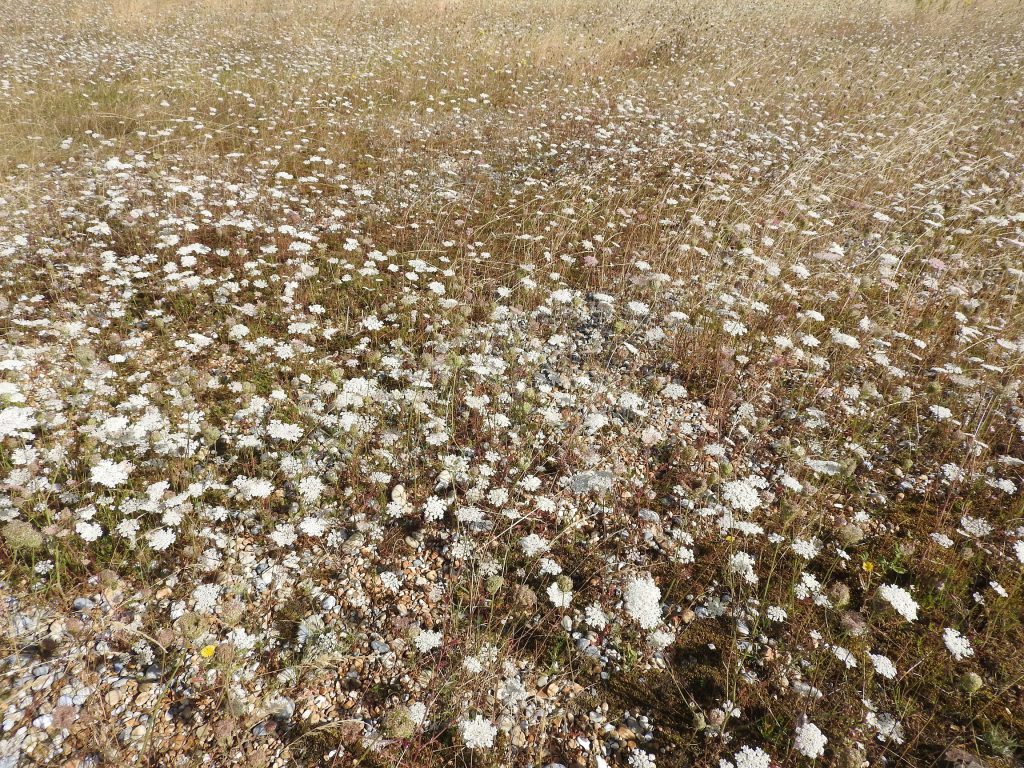The Sussex Emerald (Thalera fimbrialis) moth is a very rare beast in the UK, with breeding traditionally restricted to the disturbed shingle habitats at Dungeness in Kent (though it has colonised two other sites further east in the county in recent years).
Adults are active between July and early August and the eggs are laid (and the larvae usually feed) on Wild Carrot, though both Common Ragwort and Hoary Ragwort (and more rarely Yarrow and Gorse) are used as a secondary food-plant in the UK.

As its name suggests, this species was first found in the UK in Sussex and there were several records around the Beachy Head / Eastbourne area before the 1950s. Since then it has occurred only as an occasional immigrant and at Rye Harbour before 2019 it had only been seen twice.
This year however, there has been a veritable ‘tidal wave’ of Sussex Emeralds, with around 20 found behind the temporary Visitor Centre in July. It seems highly likely that the species has been breeding at Rye Harbour this year, though we will only know for certain if we find larvae on the reserve.
While larvae are present in late summer they are very small and difficult to find (very few of these late summer larvae have ever been found in the UK), so we will have to wait until May 2020 when they will have grown to more ‘findable’ proportions.
Probably the best place to look for it will be on the damaged shingle habitats inside the rabbit-fenced exclosures at the western side of Flat Beach. For many years this area was a ‘sea’ of non-native Red Valerian, but a program of removal followed by spreading of Wild Carrot seeds has now made it suitable as a Sussex Emerald breeding habitat.
Fingers crossed for finding some larvae on the Wild Carrot in May 2020!
The Discover Rye Harbour project, which has been awarded a grant of over half a million pounds from the National Lottery Heritage Fund, will include a programme of activities, education, training and conservation projects which will support rare species on the reserve, such as the Sussex Emerald.
Image Credits: Barry Yates .



